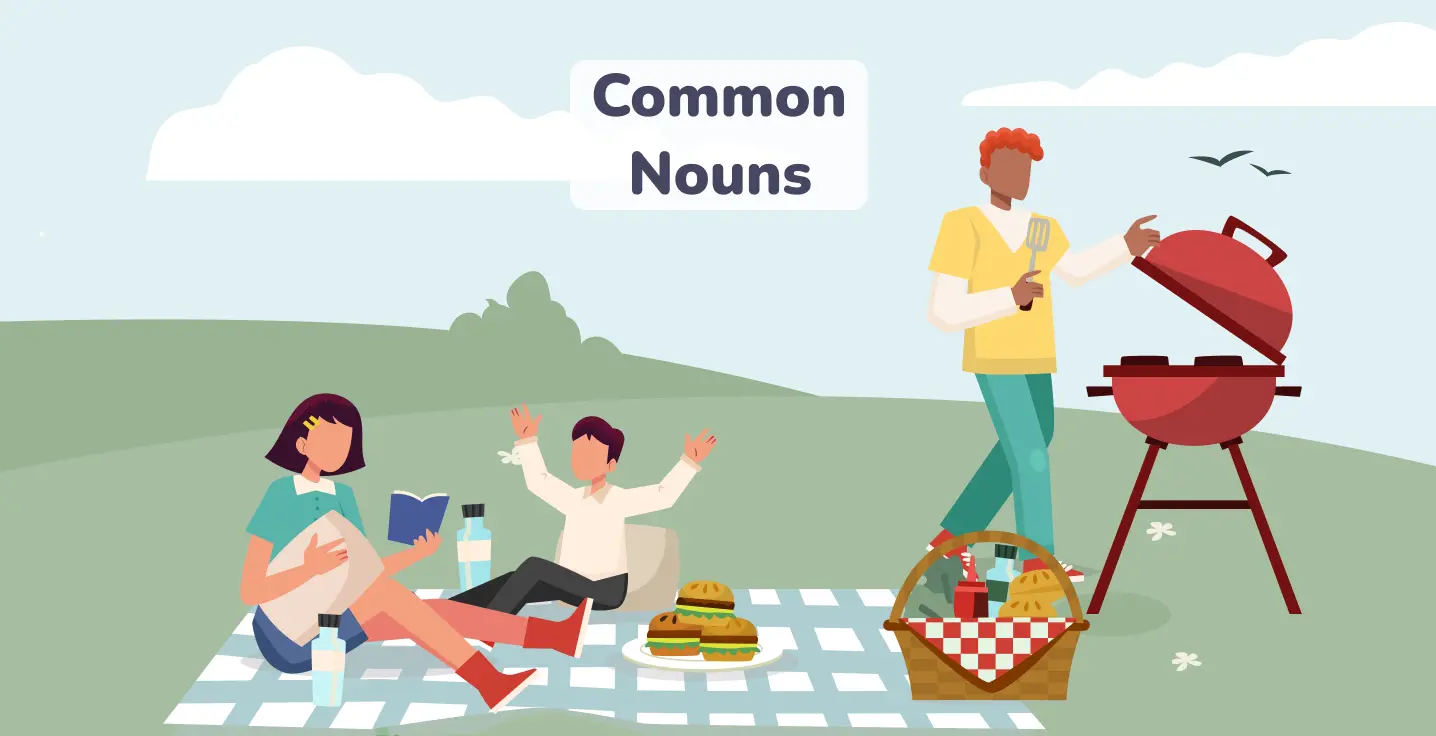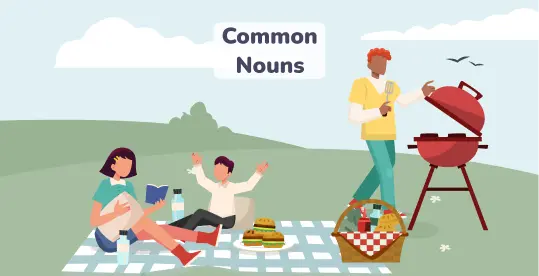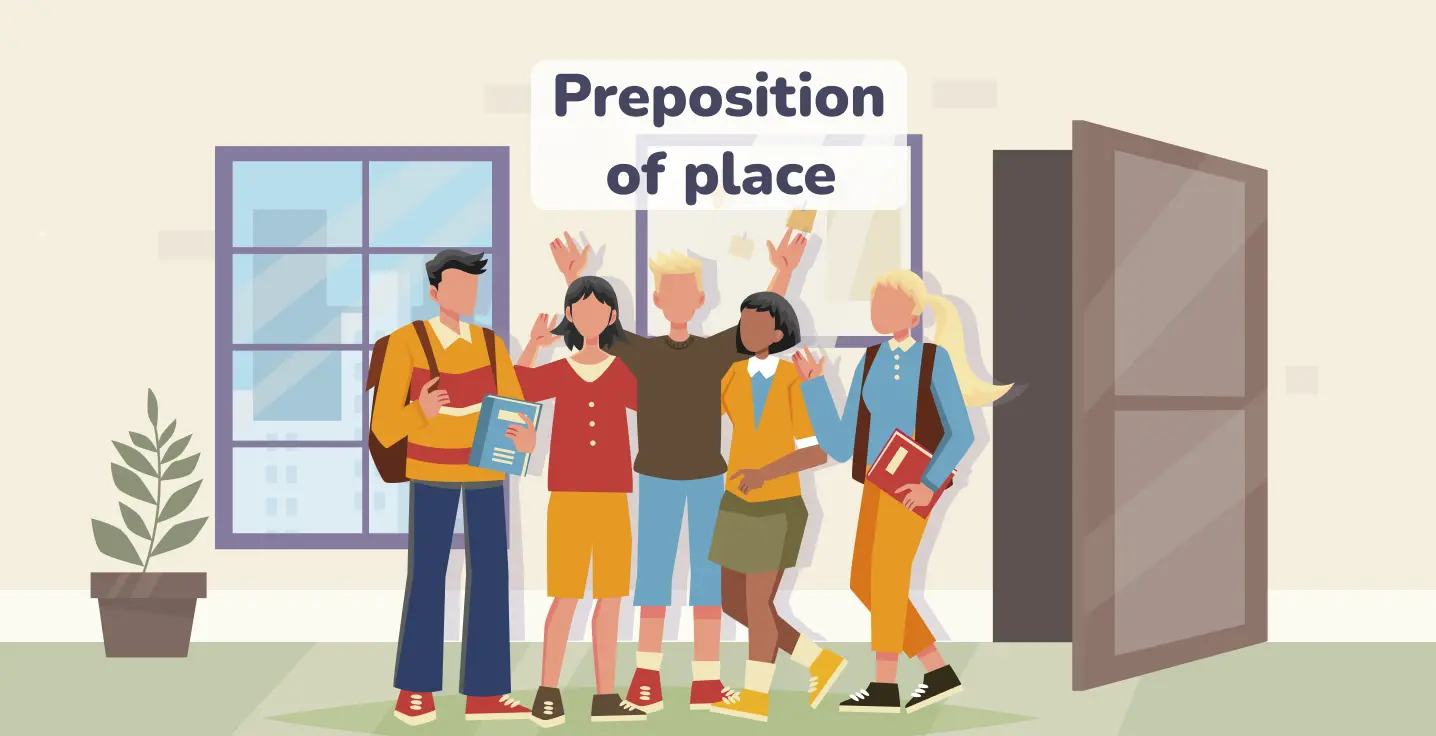What is a common noun?
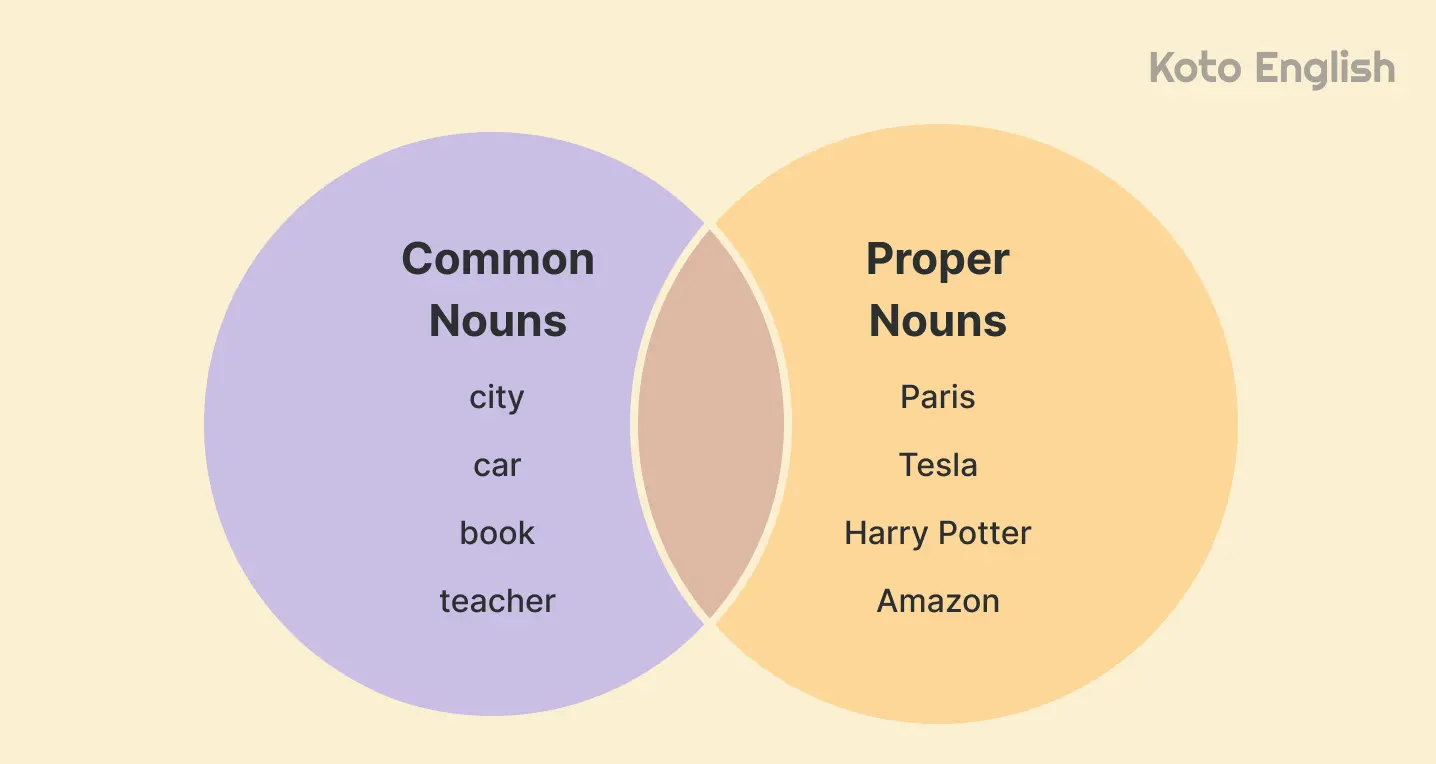
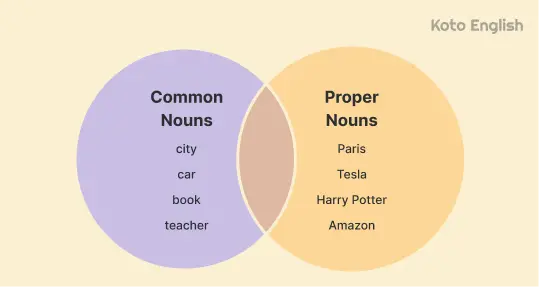
A common noun is a type of word used to describe general things, people, and places, unlike proper nouns. When you want to speak about all children, cities, or books, without specifying one, you will need to use this type of noun.
Does it seem complicated? Look at the instances below, and you will quickly grasp the idea.
Examples of common nouns:
Do you have a point? All these words — apartments, washing machines, sports shops, libraries, places, and chocolate give an idea of what is discussed, but these words can mean anything.
What car? What shop? What university? A common noun’s meaning is not intended to answer these questions. Instead, proper nouns are used.
Examples of proper nouns:

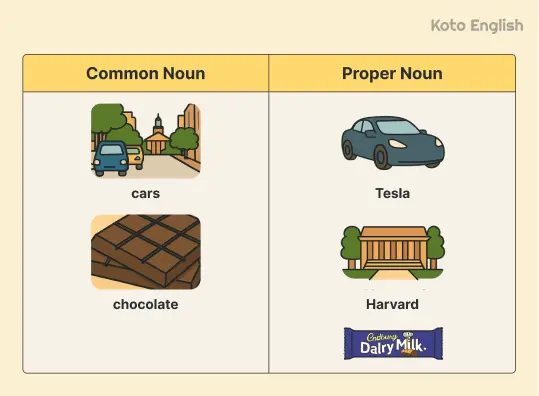
Look at both types of sentences. What do you see? Think about the pattern and continue reading to test your pattern recognition, which is very important when you learn English.
- Capital letters. When they start sentences, common nouns must be capitalized. Proper nouns are always capitalized, no matter where they are: milk, chocolate, but Target and Walmart.
- Plural forms. A car → cars, a spot → spots, a place → places, but Cleopatra, Paris, Google, no plural variations.
- Meaning. A common nouns list helps describe things that are not distinct: any washing machines, any apartments, and buildings. Proper nouns are needed to mention specific names for particular things, such as names of people (Maria, David), places (China, Amazon), and many others.
If it is a specific name, nouns are proper. If a name is the same for a category of things, it is common.
Level up your English with Koto!
Types of common nouns
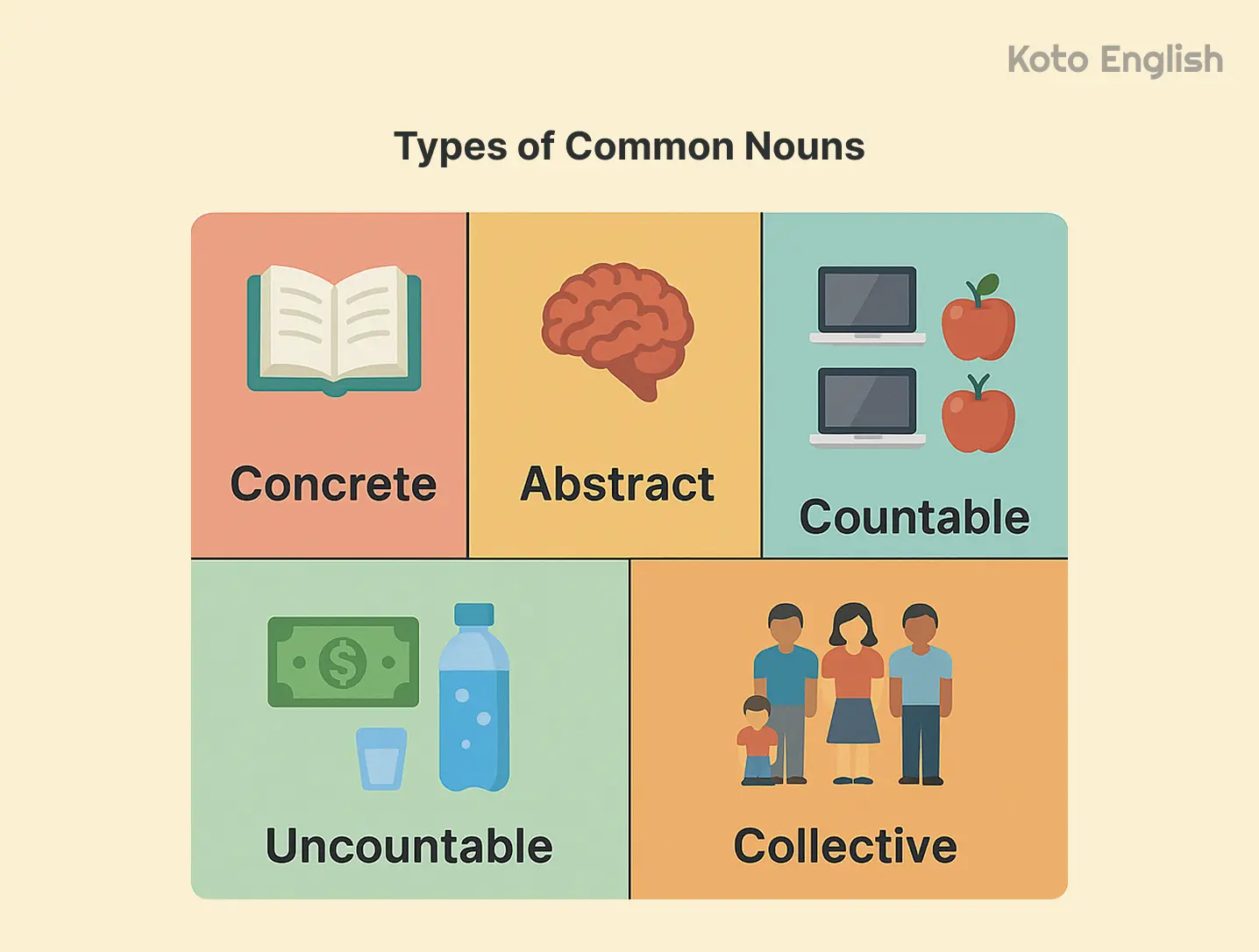

Apart from meaning general concepts and things, a common noun has more characteristics that define it. Depending on their grammatical features and the ideas they label, these English nouns can be divided into different categories. Look at the table below to know them:
| Types of nouns | Meaning | Common nouns in a sentence |
|---|---|---|
| Concrete | It refers to things we can touch, see, and engage with. |
I want to visit many
We bought many
You need to pay for
|
| Abstract | The title of nonphysical ideas we use to talk about our thoughts, emotions, and states; the opposite of concrete nouns. |
Keep your private
It is true
The company’s
|
| Countable | The group of nouns that we can count. They are used with articles and switch their form from singular to plural. |
The
Are you looking for a
|
| Uncountable | Nouns that are not used with the articles a/an and don’t have a plural form. |
Your
He needs
On the way home, buy
|
| Collective | Singular nouns that define a group of something (people nouns, animals, and objects. Also they can be plural (a band — bands). |
Our
My
Our
|
The qualities of different types of nouns can be applied to the same words. Team is a concrete, countable noun, and collective noun (represents a group of people).
How to use them in a sentence?
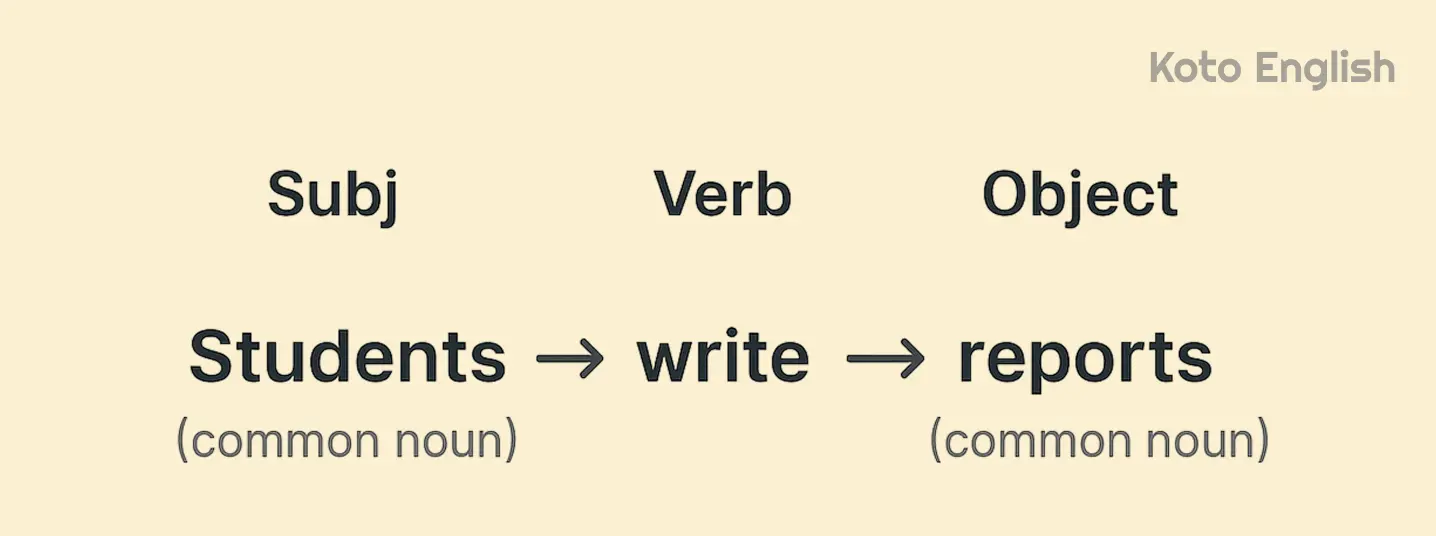
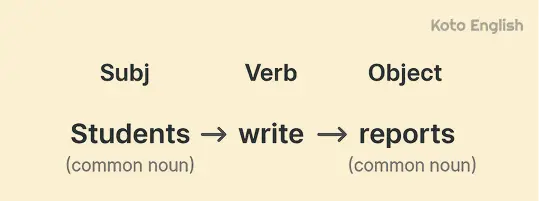
After covering the common noun’s definition, we are going to discuss the ways they are used regarding their placement, numbers, and articles.
- Position in a sentence
As subjects. Pretend the structure of a sentence. They can be used as people or objects that perform an action, being a subject of a sentence. You can recognize them as they lead many lines.
As objects. Whatever place a noun can possess, it takes, including the position of the object that is about an item to which an action is directed, as in this example of common nouns:
- With articles
Indefinite. When speaking of an item in a single copy, you choose between a and an article. A is for nouns that start with consonants (b, c, d, f, g, h, j, k, l, m, n, p, q, r, s, t, v, w, y, z) and sound like it. An goes with vowels (a, e, i, o, u).
The rule is tightly connected to the sound of words, not only to the way they are written. That’s why the word university is used with a, because it begins with the yuh sound.. A similar case is with the word hour. The first letter is silent, and the correct article is an.
Definite. All categories of proper nouns, whether singular or plural, countable or uncountable, concrete or abstract, can be used with the article the when you want to indicate something unique or known to speakers.
- Highlighting possession
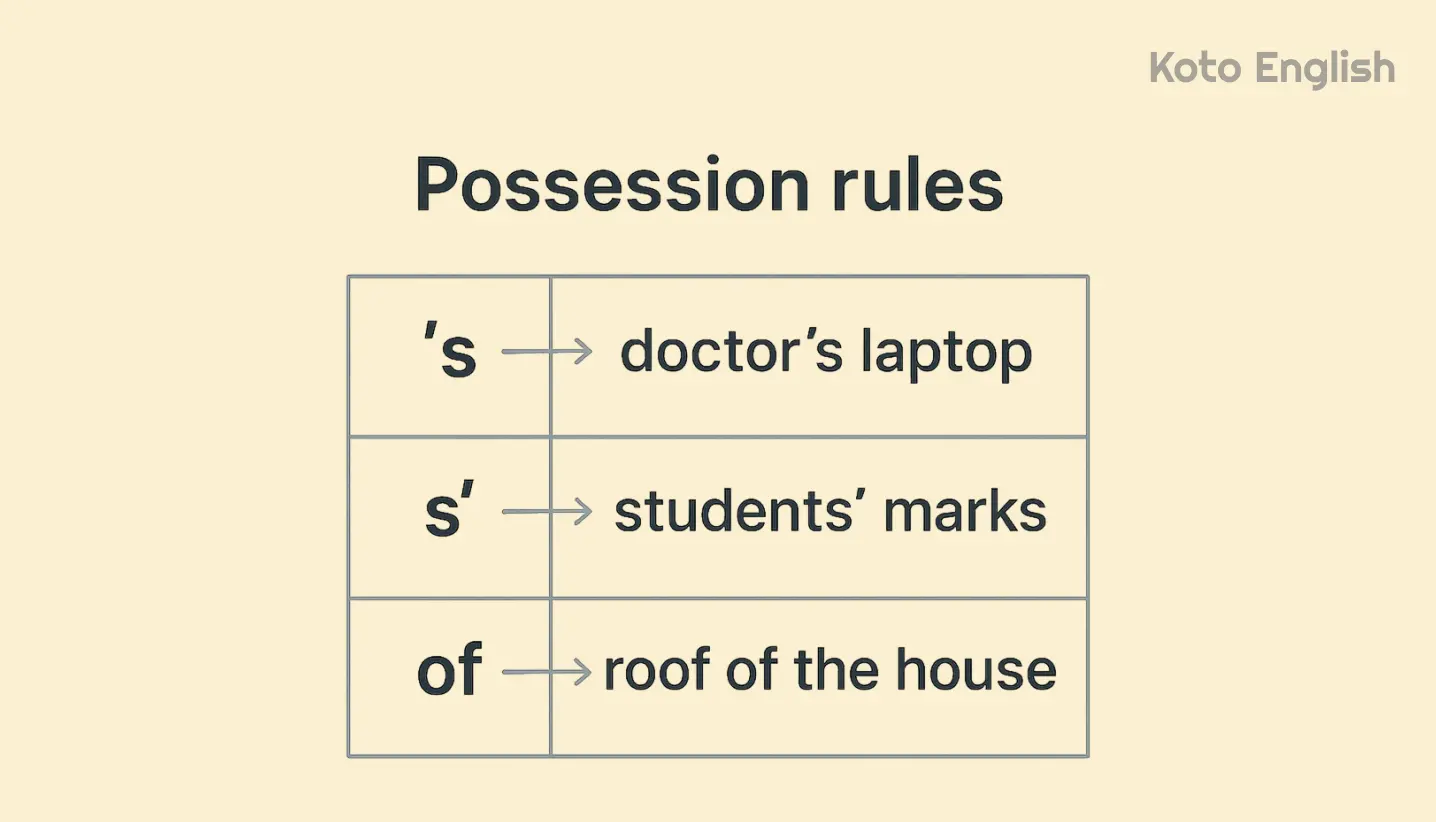

S’ or ‘s. Needing to note that something belongs to a person of a profession, title, social or family role, you’ll need to attach ‘s to singular nouns (doctor’s, mother’s, mayor’s) and words with irregular plural form (women’s, men’s, children’s).
If a common noun is plural and has an -s ending, you just need to add the apostrophe (actors’, parents’, professors’, audiences’).
Of. When a possession is not direct or you want to emphasize a connection between two inanimate nouns, it is common to use the word of. You say the roof of the house instead of the house’s roof because it sounds more natural and native-like.
Rules for capitalization
Have you wondered about why some words are written in capital letters and others are not? You will learn the rules of when most common nouns have to be capitalized:
| Case | ||
|---|---|---|
| Case | Context | Common noun example |
| Start a sentence | The first word of a sentence, no matter the part of speech it belongs. |
|
| Are part of a proper noun phrase | Being a particle of such a phrase as Museum of Modern Art, Central Park Zoo, an extensive list of common nouns behaves like proper ones. |
He wants to study in Harvard
Harry Potter and the
|
| Are in titles and headings | When writing an article, it is usual to keep to one style for all words. |
10 Most Important
How to Learn New
|
| Don’t capitalize when they | ||
|---|---|---|
| Case | Context | Examples |
| At any other position in a sentence | Starting from the second word, lowercase is applicable. Even if it goes after an article — there is no need to capitalize a noun. |
The
Can you
|
| Job titles | Speaking of jobs in general doesn’t require any additional highlights. |
When I was a child, I wanted to become a
My brother is looking for a good English
|
| Subjects | Maths, geology, and architecture seem to be something very specific, but when they are not part of specific titles, treat them as any other common nouns examples. |
Should I study
My best friend couldn’t understand
|
Mistakes to avoid
Some typical mistakes are frequent when you master this topic, and usually they appear because of multiple usage rules, such as articles and their absence, and irregular plural forms. These and other examples are presented below with explanations and examples in context:
Confusing common and proper nouns
This error comes in many formats. It is easy to misunderstand whether a noun is proper or common. In some languages, these rules may differ from English.
|
I am moving to the USA country.
|
I am moving to another country.
|
|
Richard is a developer man.
|
Richard is a developer.
|
Over-capitalization
If they are not at the beginning of sentences, these nouns don’t require capital letters. Write small letters when a noun is in the middle of or at the end.
|
There are no Airoports in my city.
|
There are no airports in my city.
|
|
Check the Website before buying things from there.
|
Check the website before buying things from there.
|
Wrong plural nouns
The typical rule of adding -s or -es endings to nouns doesn’t work with all words. There is a group you need to remember to create correct sentences.
|
These womans helped me a lot.
|
These women helped me a lot.
|
|
This cafe is good for childs.
|
This cafe is good for children.
|
Misusing articles
In most cases, you need to use an article (a, an, the) or words such as some, any, or no with a common noun.
|
Building you are looking for is on the right.
|
The building you are looking for is on the right.
|
|
Can you pass me apple?
|
Can you pass me an apple?
|
Conclusion
The common nouns’ meaning is simple, yet the usage rules may take some time to settle in your memory. You need to understand the distinction between different types of nouns because they are connected with topics such as articles, plurals, and so on, so by polishing this grammar, you improve more than one aspect.
The most effective way to memorize them and use them without mistakes is to read, write, and listen to a lot of English content on apps like Koto English. By learning how these words are pronounced and written, you will produce sentences quickly.
Enjoy personalized learning!
Common noun FAQ
What are common nouns? They are the words used to describe general things, such as people, ideas, places, and items. Using this type of noun, you refer to things in general, without specifying them.
Common noun examples:
At the same time, proper nouns mean the opposite. They are used to discuss specific people and concepts.
Examples:
Yes, they can. This grammatical feature doesn’t depend on the type of nouns, but comes from the possibility of counting the items they represent. Workers in a company, children in classes, projects in portfolios — you can name a number of them..
Examples:
However, the information won’t be complete without uncountable nouns. They name concepts and items whose number you can’t say, including love, knowledge, air, gold, and weather.
Examples:
There are several navigation points that will help determine the type of noun you deal with. To make it easier, we compared the two kinds and highlighted their differences. Let’s look at the table to be aware of the particular qualities of these nouns:
| Type of nouns | Capitalization | Context | Plural forms | Articles |
|---|---|---|---|---|
| Common | Only when they start a sentence. | General | Yes, with -s or -es endings. | Yes, a/an/the or some, any, no. |
| Proper | Always | Specific | Typically, no | No |



